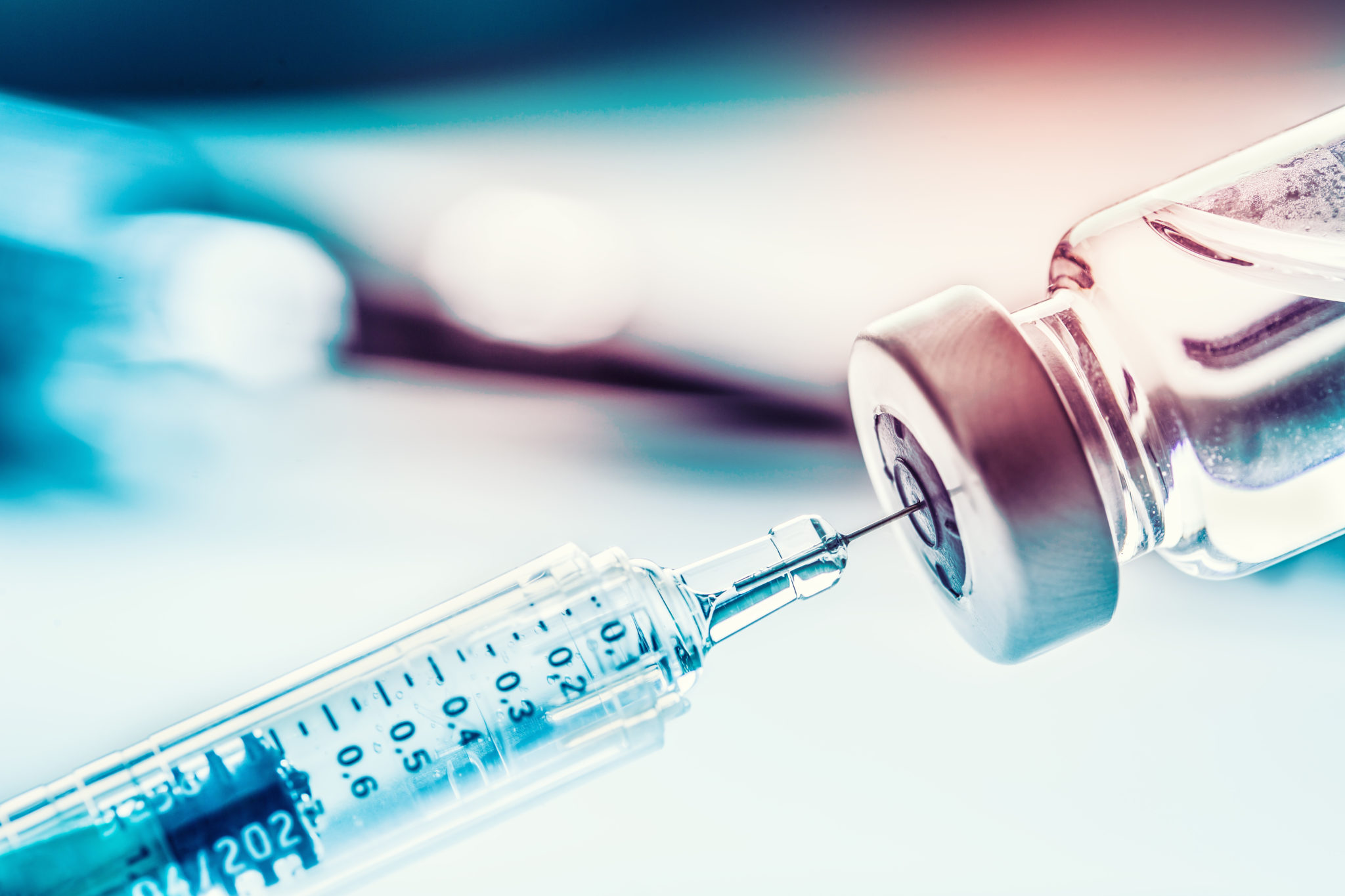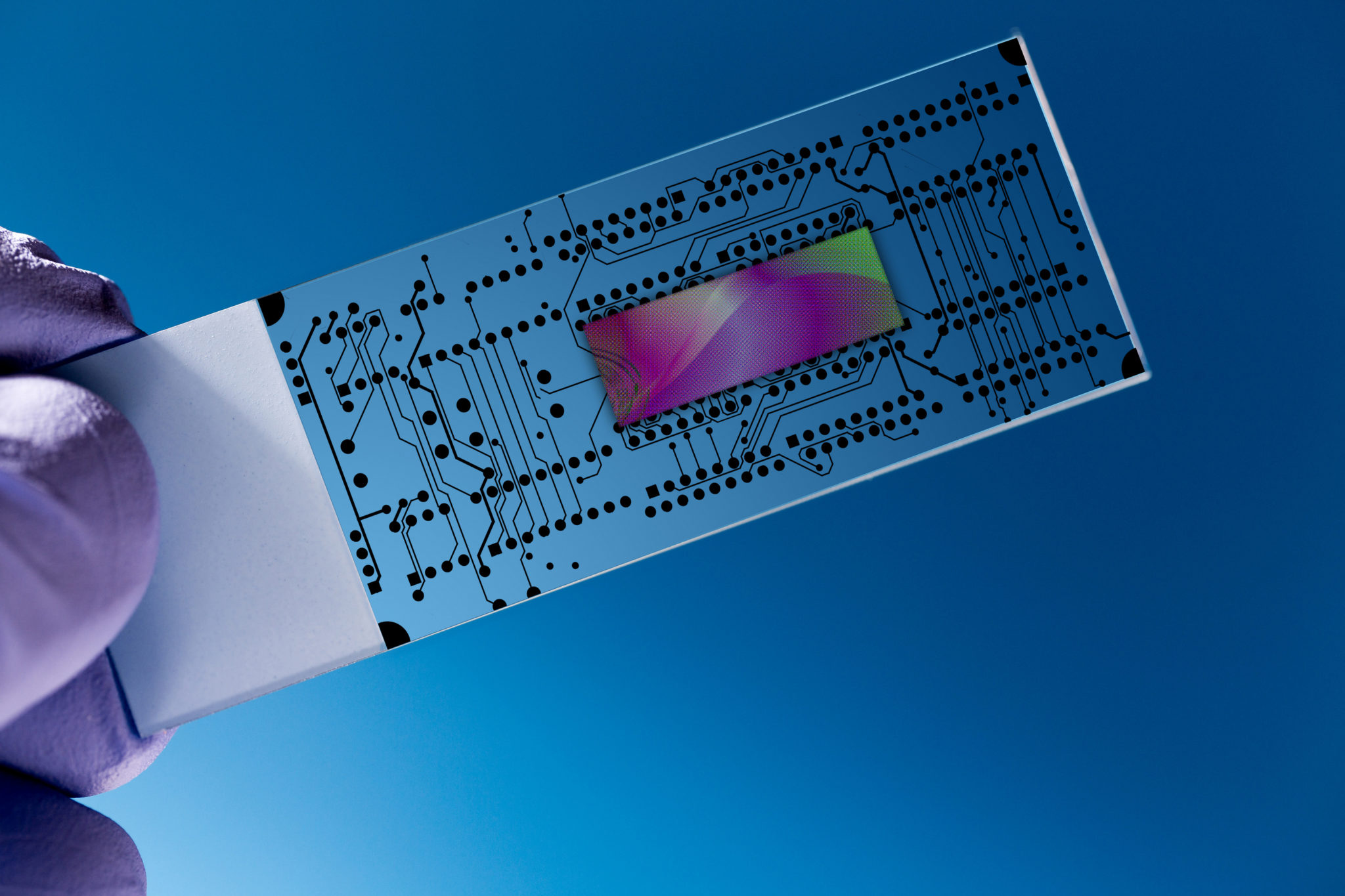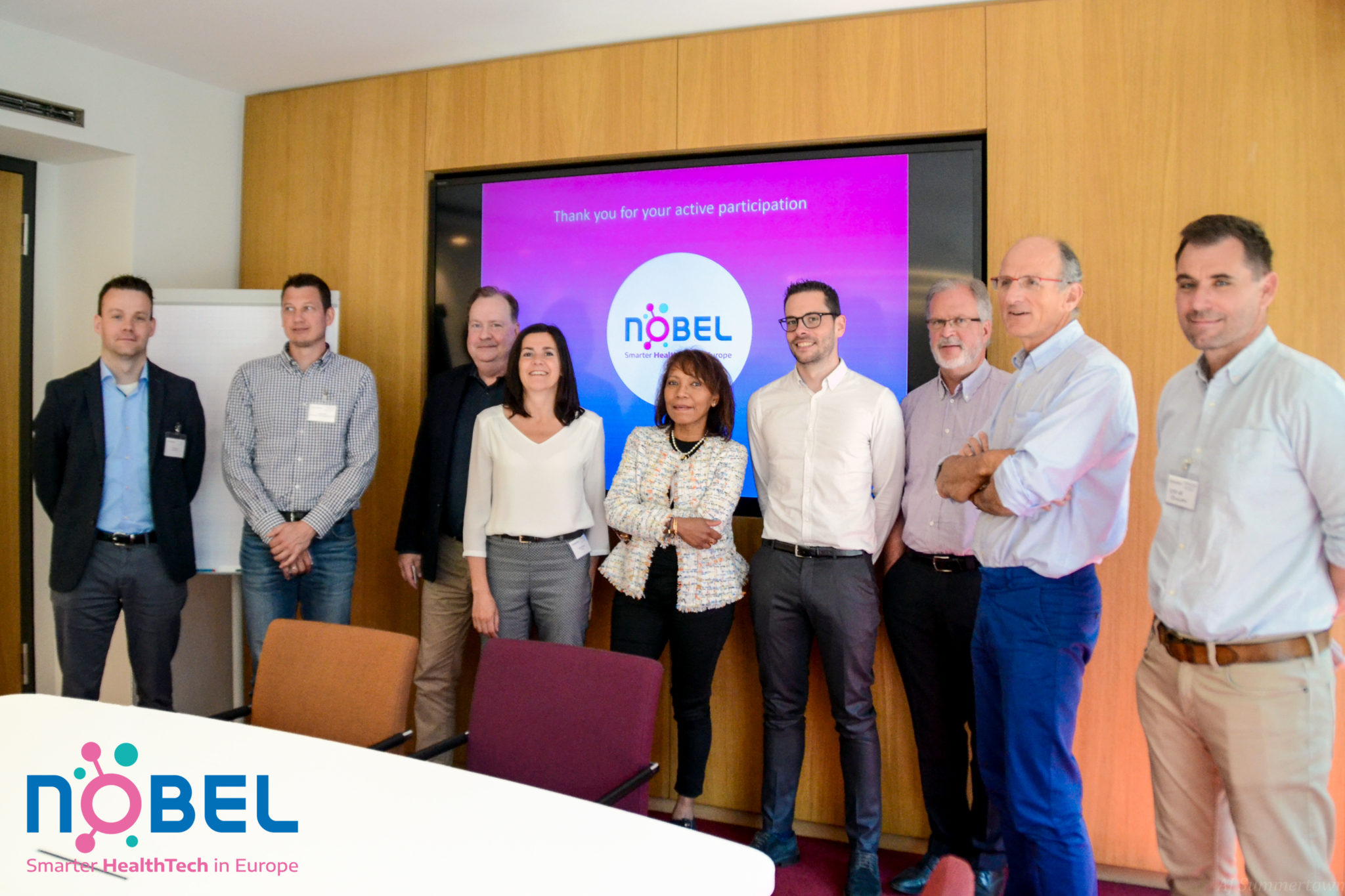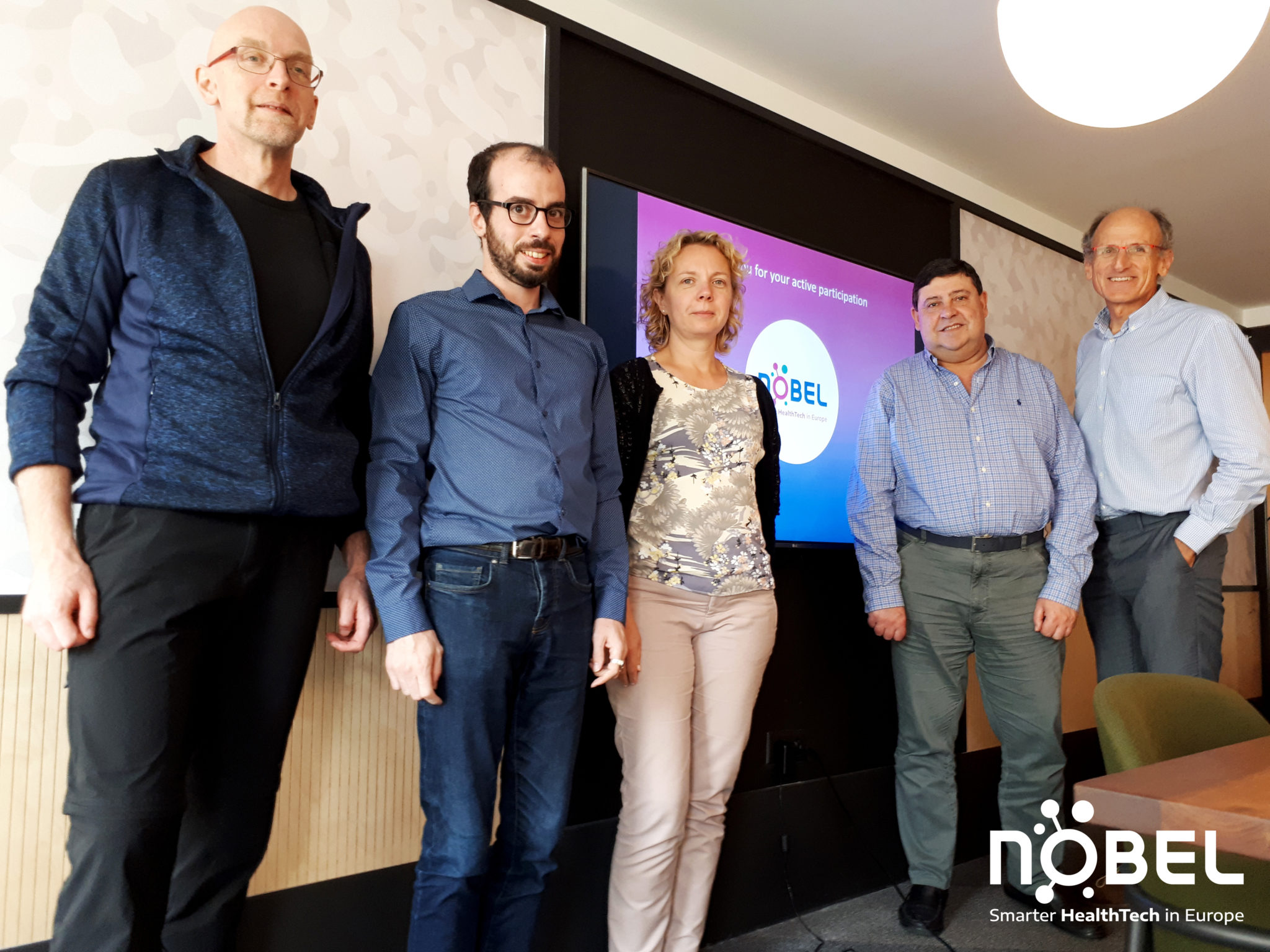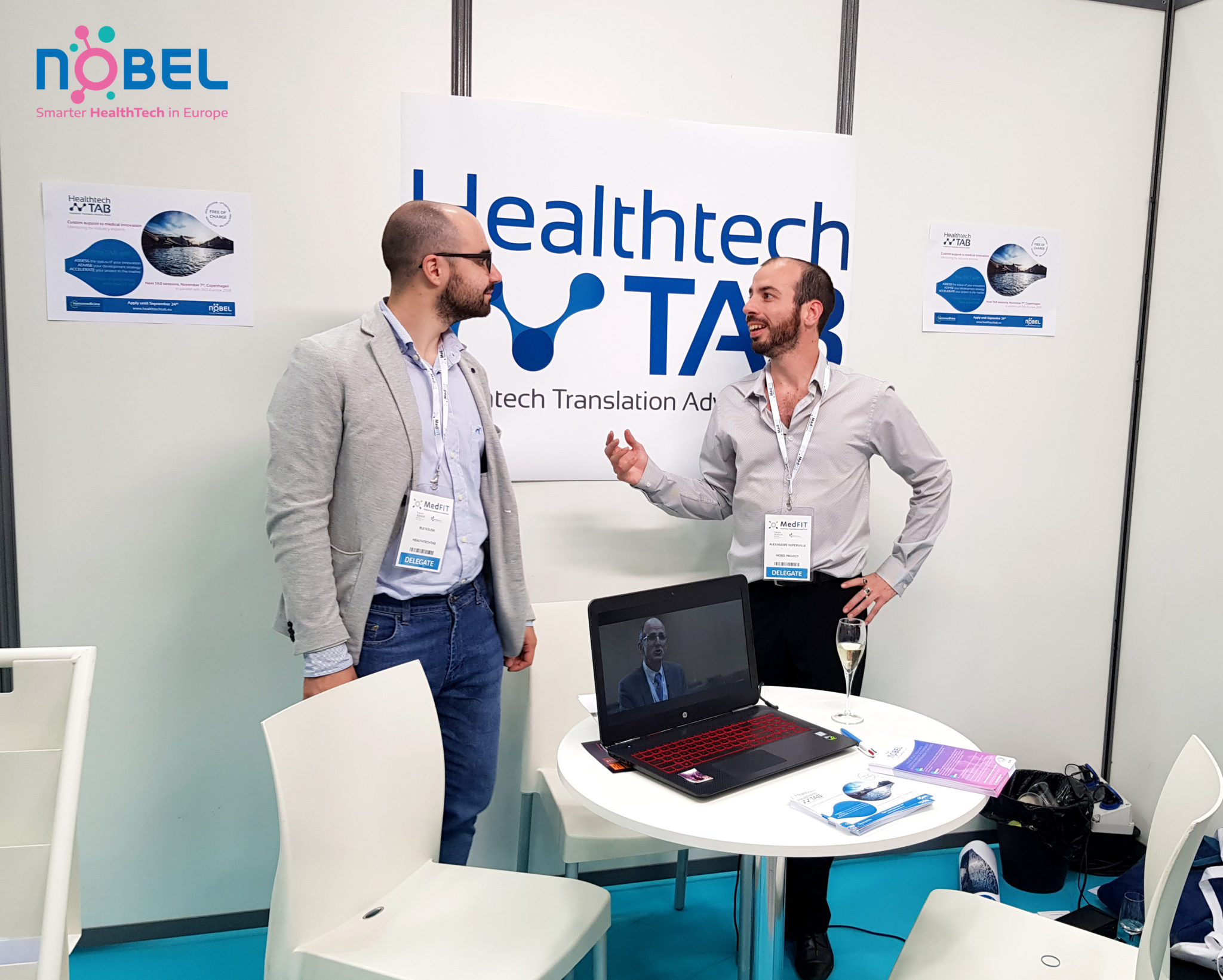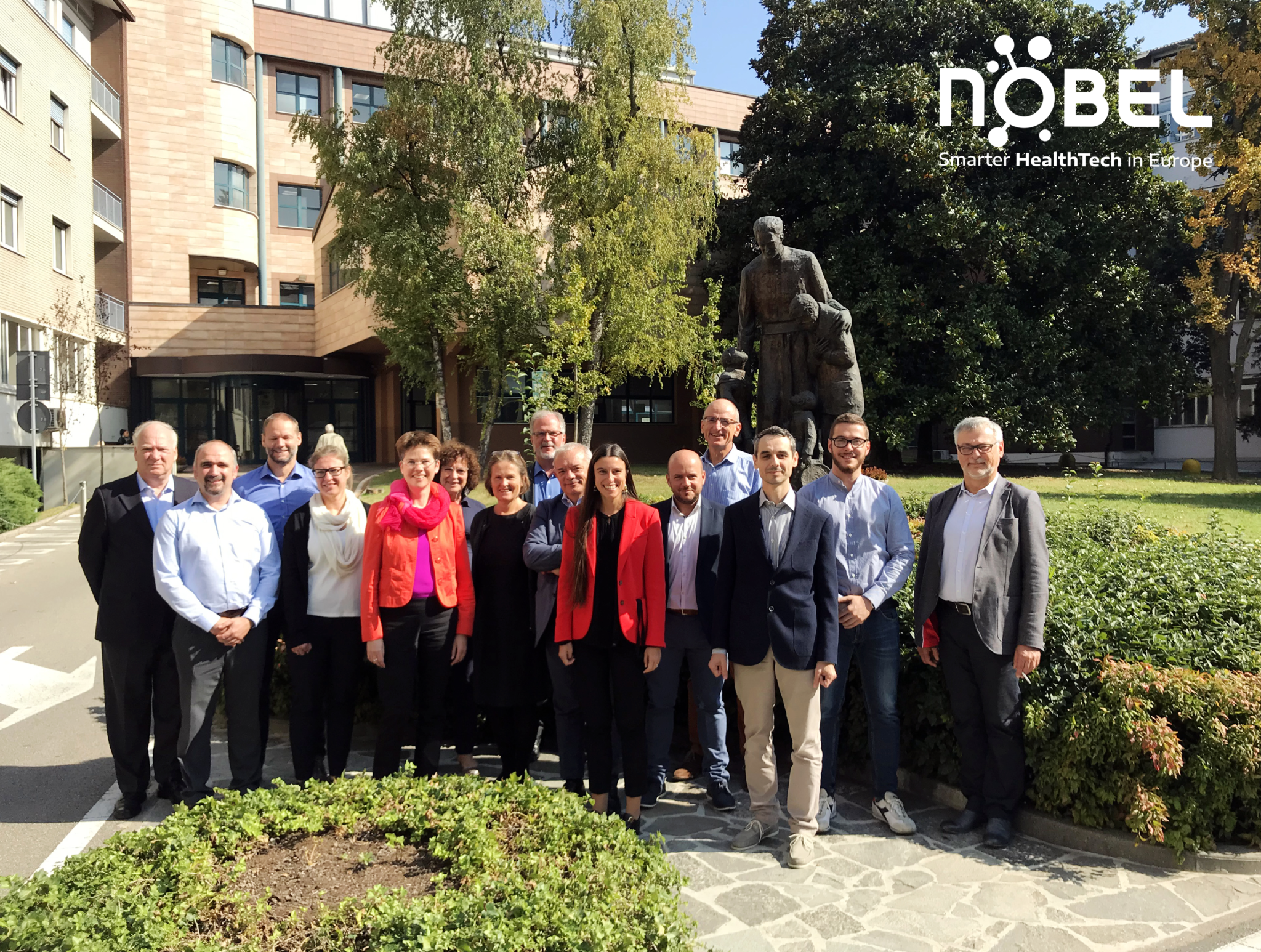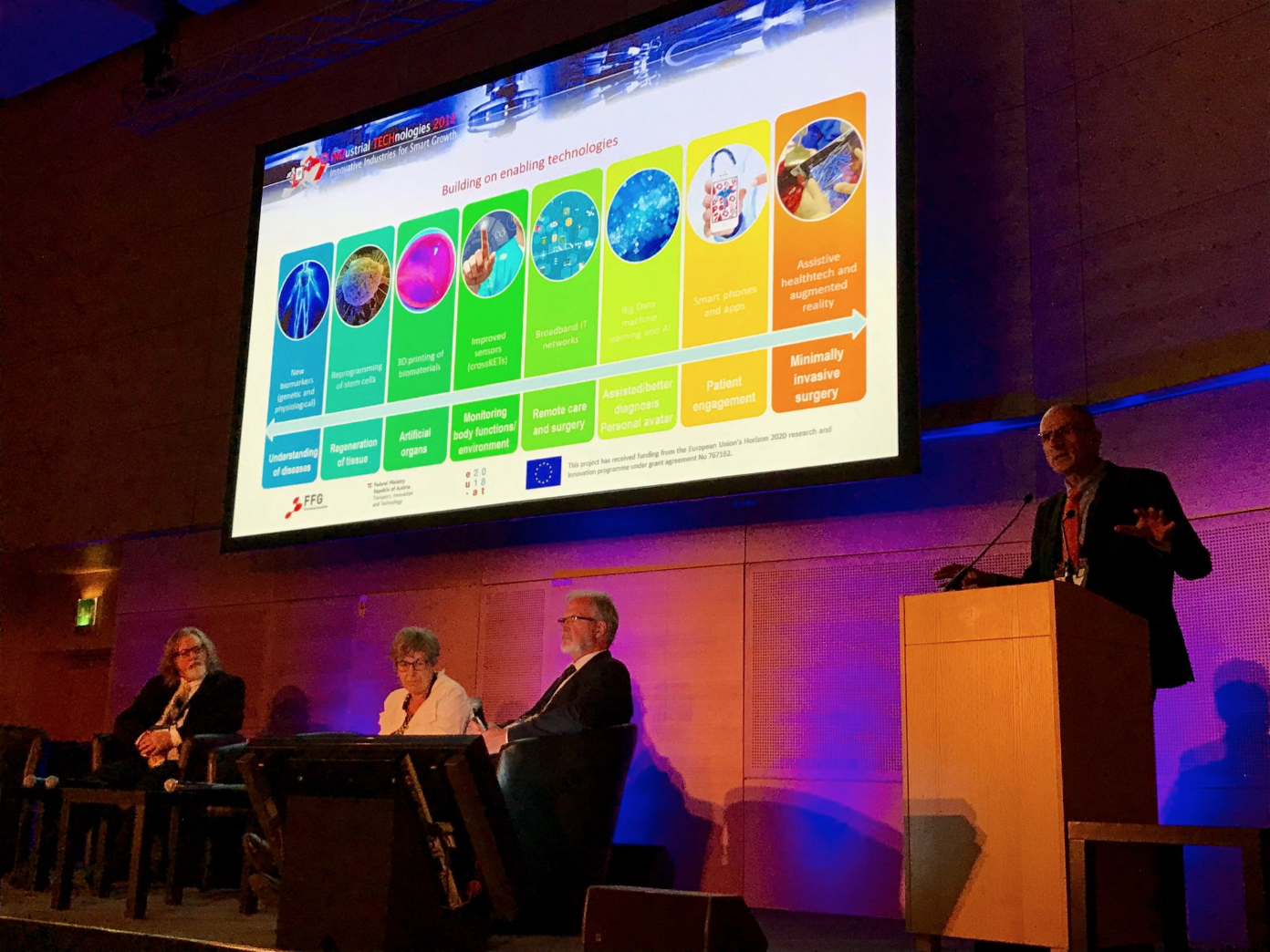Nanomedicine
Nanotechnologies for healthcare
Nanomedicine is medicine performed at an extremely small level. Nano-objects classically have dimensions around 0,000001 millimeter. For instance, about 5000 nanoparticles could fit around a single human hair! At this scale, materials show new properties that researchers and clinicians can use to detect and treat diseases. Nanomedicine often evokes futuristic nanorobots that will travel in blood vessels to repair the human body. Instead, nanomedicine is already a reality impacting all fields of healthcare. Nanoparticles used in medical imaging allow early, accurate and cost-efficient diagnosis. Nanocarriers can deliver drugs at the right place and at the right moment, improving chemotherapy safety and efficacy for instance. Other nanoparticles don’t even need to be associated with existing drugs anymore to show therapeutic effects: specific nanocrystals are designed to boost the efficacy of radiotherapy to better treat cancer. Regenerative medicine enabled by nanomaterials can also help to repair and replace damaged parts of the human body. In fact, nanomedicine is only at the very beginning of a medical revolution.
Nanomedicine: why is small different?
Nanomedicine is the application of nanotechnologies to healthcare. It uses the properties shown by materials at the nanometric scale (10-9 m), which often differ in terms of physics, chemistry or biology from the same material at a bigger scale.
The nanometric size is also the scale of many biological mechanisms in the human body allowing nanoparticles and nanomaterials to potentially cross natural barriers to access new sites of delivery and to interact with DNA, RNA and small proteins at different levels, in blood or within organs, tissues or cells.
At the nano-scale, the surface-to-volume ratio is such that the surface properties are becoming an intrinsic parameter of the potential actions of a particle or material. Coating particles and functionalising their surfaces (even on multiple levels) are in this way extremely common approaches to increase their biocompatibility and circulation time in the blood, as well as to ensure a highly selective binding to the desired target.
Nano, in maths, means 0.000000001 or 10-9!
You could fit 5,000 nanoparticles around a single hair!!
Nanotechnologies impact all fields of healthcare
Nanomedicine has the potential to enable early detection and prevention and to drastically improve diagnosis, treatment and follow-up of many diseases, including cancer but not only. Nanomedicine has nowadays hundreds of products under clinical trials, covering all major diseases including cardiovascular, neurodegenerative, musculoskeletal and inflammatory. Enabling technologies in all healthcare areas, nanomedicine is already accounting for more than 80 marketed products, ranging from nano-delivery and pharmaceutical to medical imaging, diagnostics and biomaterials.
Nanomedicine is nothing else than “nano in medicine”. Consequently, nanomedicine products follow the same regulations as other drugs and medical devices ensuring their safety and efficacy for the patients.
Earlier and better diagnosis
In-vivo, in-vitro and combined with imaging through biomarker detection.
Smart drug delivery
Improved efficacy and/or decreased toxicity of drug delivered by nanocarriers. It allows targeted and/or personalised treatment.
New treatment options
Drug-free nanotherapeutics working by pure physico-chemical modes of action.
Optimised regenerative medicine
Nanomaterials combined with biomaterials and engineered biological material (including stem cells) to improve stability and medical functions.
Nanocomponents included in wearable devices
Remote monitoring of diseases & conditions, source of patient clinical data.
Nanomedicine applications in healthcare
The global nanomedicine market
2019
US$112
billion
%
Annual growth rate
2023
US$261
billion
How will NOBEL support the nanomedicine community?
- The European project NOBEL is a Coordination and Support Action (CSA) under Horizon 2020 aiming to help the convergence of nanomedicine with other key enabling technologies with applications in healthcare: photonics, robotics, advanced materials and digital health. NOBEL is coordinated by the ETP-Nanomedicine.
- Six national nanomedicine platforms are Associated Partners to the NOBEL Project: NanoMed Spain, SFNano (France), the British Society for Nanomedicine, the German NanobioMedizin Platform, Nanomed Austria and NanoMed North (Denmark / Sweden). Providing a meeting space for 7 national nanomedicine platforms and dissemination at the European level is a mission of the NOBEL Project.
- European Technology Platforms (ETPs) represent each individual technological community at the European level and help bridging those communities with the European Commission. Six ETPs that have applications in healthcare are associated to NOBEL: ETP-Nanomedicine, Photonics21, EU-Robotics, EU-MAT, the European Society of Biomaterials and the ETP for Smart Systems Integration (EPoSS). The NOBEL Project provides them with a meeting space and dissemination by organising annual meetings of their representatives and sharing information from each of them to the HealthTech community.
- The NOBEL Project provides the ecosystem with a roadmap of the future of HealthTech in Europe by combining the inputs of all its Associated Partners in a single vision: the Continuum of Care, a vision for the future of healthcare in Europe
Contacts
European Technology Platform on Nanomedicine (ETPN)
www.etp-nanomedicine.eu / secretariat@etp-nanomedicine.eu
- See the Nanomedicine map
- Become an ETPN Member: https://etp-nanomedicine.eu/members/membership/
- Download the Strategic Research and Innovation Agenda for Nanomedicine 2016-2030
- More strategic documents available: https://etp-nanomedicine.eu/about-etpn/publications/
Do you need support to boost your nanomedicine technology on the market? See www.healthtechtab.eu
EU-NCL, the European Nanomedicine Characterisation Laboratory, performs free-of-charge biological, chemical and physical characterisation of your nanomedicine product: more information on www.euncl.eu
All terms are defined in the Glossary.
The list of technologies/products/companies described in these fact sheets is not exhaustive and does not intend to promote any particular actor of the HealthTech community nor to advertise particular product/company.

